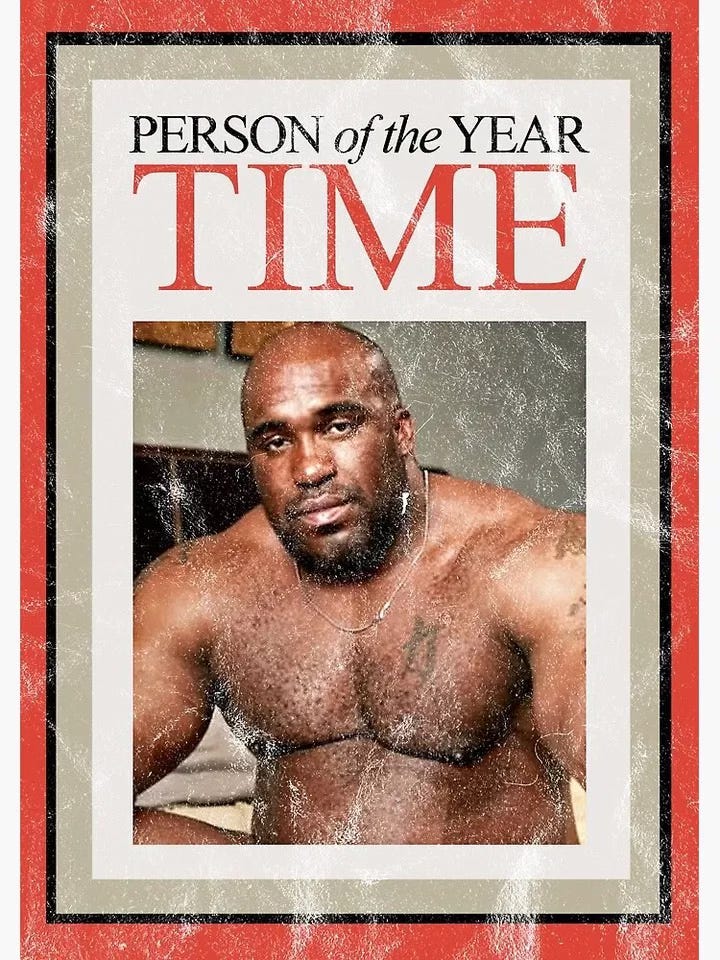The Meme Prank That Healed a Broken Internet
How a church deacon from San Francisco became the internet’s most legendary prank photo — and quietly, one of its most beloved figures.
Every era has its icons. The Renaissance had Michelangelo. The '90s had Britney Spears. And 2020? It had Barry Wood— the meme legend who became the punchline, the plot twist, and ultimately, a pandemic-era internet folk hero.
In a year of lockdowns, social isolation, sourdough starters, and Tiger King-induced mania, Barry Wood emerged as the unexpected glue holding the internet together. His photo — a jaw-dropping image of a man sitting calmly on the edge of a bed with, shall we say, unignorable proportions — went viral in a way few memes ever do. It was a cultural reset. A digital rite of passage. And it brought people together, one clickbait prank at a time.
The Pandemic’s Greatest Distraction
While scientists raced to develop vaccines and Zoom fatigue reached critical levels, millions of group chats, TikToks, and live streams turned to Barry Wood as the ultimate “gotcha” image. He was deployed like digital napalm — embedded in fake news screenshots, disguised behind QR codes, or dropped in Discord servers with reckless glee.
But it wasn’t just a thirst trap prank. It was catharsis. Laughter. Chaos. Community. In a time when everything felt apocalyptic, Barry gave the internet permission to be unserious — to laugh at the absurd, even while the world burned.
But Who Was Barry Wood?
Turns out, he wasn’t even Barry. The man behind the meme was Wardy Joubert III, a San Francisco native, former semi-pro football player, and beloved church deacon. He was deeply involved in his community, known for his mentorship, coaching, and kindness. And in 2010, facing financial hardship, he posed for a nude photoshoot to make ends meet.
The photo remained mostly obscure until the internet dug it up years later — stripping it of context, but inadvertently immortalizing it. And once the internet found it? Game over.
From Meme to Movement
As Barry Wood’s meme spread like wildfire in 2020, people eventually began asking: Who is this guy? A VICE documentary peeled back the curtain, revealing a touching story of resilience, dignity, and generosity. Sadly, Joubert passed away in 2016 at the age of 45 — years before his image became digital canon.
When people learned about the man behind the meme, the internet did something rare: it showed compassion. A GoFundMe campaign was launched to honor his memory and support causes he believed in — including food and hygiene kits for the unhoused in San Francisco. Barry Wood became more than a punchline. He became a symbol.
The Meme That Healed a Broken Internet
Barry wasn’t trying to go viral. He wasn’t chasing clout, followers, or fame. But maybe that’s why he resonated. In a year overloaded with influencers live-streaming mental breakdowns, TikTok conspiracy theories, and the endless churn of doomscrolling, Barry Wood was pure. He asked nothing of us — except maybe to double-check before clicking a suspicious link.
He reminded us that even the most ridiculous memes have human stories behind them. That dignity and virality aren't mutually exclusive. And that sometimes, the most unlikely people can leave the biggest mark — quietly, hilariously, and posthumously.
So here’s to Barry Wood — the pandemic’s unsung hero, internet legend, and a man whose legacy proves that even in chaos, we can still laugh, reflect, and remember.







Story*
Crazy stiry